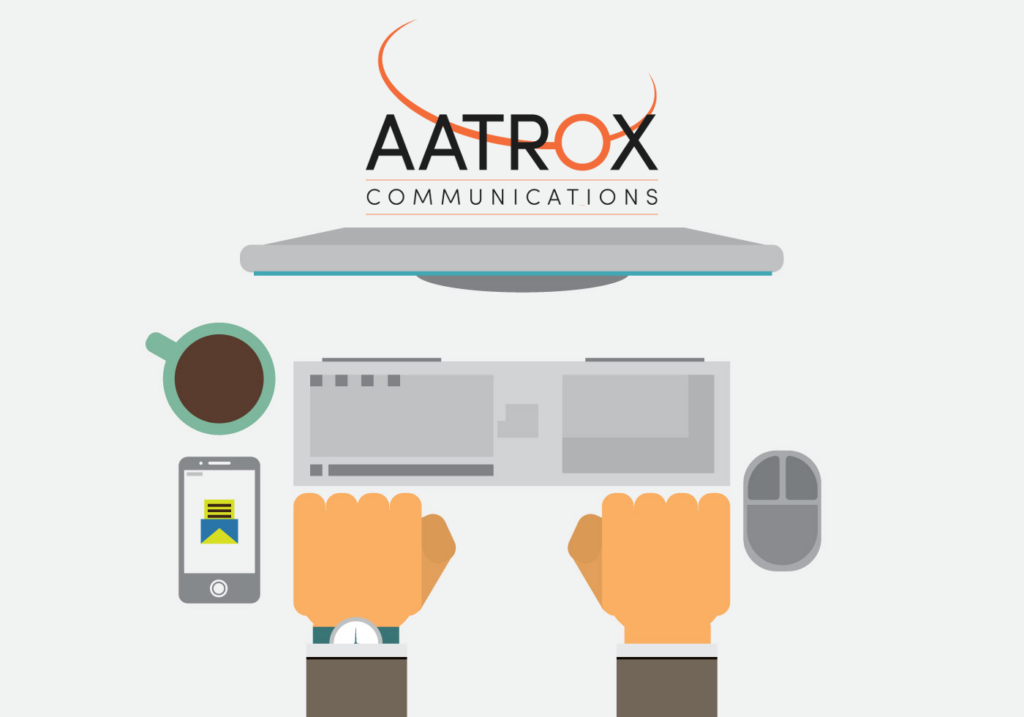SIP Trunking allows telephone services to be delivered over IP – a core part of Voice over IP, or VoIP.
A SIP Trunk is used to replace older style analog and ISDN connections and allow customer phone systems and devices to be connected to telecom service providers like Aatrox Communications using high-speed internet services.
Calls can be made as normal over a SIP trunk to the public switch telephone network (PSTN), such as landlines, mobile calls, and international calls.
The major telcos are moving customers to SIP trunks (both in Australia and globally), with many already announcing shutoff dates of their ISDN and analog services over the next 5 or so years.
Replacing a users traditional phone system with a SIP trunk allows the provider to save money – but those savings aren’t always being passed on. Customers have the opportunity to weigh up their options and significantly reduce their call and infrastructure costs.
What are the benefits of SIP trunking?
The biggest advantages of choosing a SIP Trunk over traditional PSTN services come down to cost and flexibility.
Line rental costs with analog and PSTN services can be very high due to the need for an actual physical copper line. A SIP Trunk can make use of your existing internet infrastructure to lower or eliminate this cost.
Call costs
The cost of both domestic and international calls are significantly reduced. It’s not unusual for call costs to be reduced by 60% when moving from traditional to SIP services.
Number Portability
Portability allows you to move locations and keep the same number (not just forward it, but actually keep it for inbound and outbound calls). This means that you’re no longer limited to the 02 prefix in NSW, and so on.
International SIP Trunks
International SIP trunking allows you to provide an Australian number to an overseas company or branch office (or vice versa) – and for all calls made from that office to Australia to be treated and billed as local Australian calls.
How does SIP call quality compare with ISDN and traditional call quality?
A top-quality SIP call is better than the best quality analog call.
Will all your SIP calls be high-quality?
That depends on a few things.
The first is your connection itself – see bandwidth recommendations – and the second is the protocol used. SIP calls can use one of several different VoIP protocols – the main ones are G.729, G.711, and G.722.
G.729 uses the highest compression, so is great where there are bandwidth limitations, such as on a low speed internet connection. It is comparable to a mobile phone call.
G.711 is the default for most VoIP communications and uses lower compression. It is comparable to the highest quality analog phone call.
G.722 provides better quality than the public switch telephone network (PSTN), but requires additional bandwidth. For applications where voice quality is key it is the preferred choice.
Read more about other common VoIP protocols.
How many SIP Trunks do I need?
A SIP trunk consists of a number of SIP lines. Each SIP line can carry one concurrent / simultaneous call – so a trunk with 8 lines can be used for up to 8 inbound or outbound calls at once.
A general guide is to divide the number of users by 3, but that should only be used as a guide and will vary based on how you use telephony.
It’s important to be aware that a conference call will use a SIP line for every external call participant.
How much bandwidth do I need for SIP Trunking?
A SIP trunk can carry audio in a number of different formats.A SIP trunk can carry audio in a number of different formats.
Using the G.711A codec (standard) each call needs a minimum of 100kbps upstream bandwidth.
| Number of concurrent calls | Minimum bandwidth (upstream) for G.711A5 |
| 5 | 512 kbps |
| 10 | 1 Mbps |
| 15 | 1.5 Mbps |
| 20 | 2 Mbps |
| 25 | 2.5 Mbps |
| 30 | 3 Mbps |
| 50 | 5 Mbps |
| 100 | 10 Mbps |
| 200 | 20 Mbps |
Other codecs may have higher bandwidth requirements.
Are there any other internet connection requirements?
Voice quality is not just dependent on bandwidth, but also on your connection’s latency and jitter.
Most business grade internet connections will be completely suitable for VoIP.
Some less common connection types like satellite are not suitable for VoIP.
Aatrox Communications can provide more information on whether your connection will be suitable for VoIP.
Can I keep my phone number(s) with VoIP?
Absolutely!
Any existing land line number or range of numbers can be ported to your SIP provider and attached to your SIP trunk, allowing you to make and receive calls from it.
This includes 1800, 1300 and 13 numbers.
Numbers may be single or in a range of 10 or 100.
To port your number and attach it to your SIP Trunk, we will need the permission of the account holder. Depending on a number of factors outside our control, ports may take several weeks.
We are able to offer you a temporary number while your number is porting which is hidden from the people you call.
Can I keep my phone number(s) with VoIP?
Absolutely!
Any existing land line number or range of numbers can be ported to your SIP provider and attached to your SIP trunk, allowing you to make and receive calls from it.
This includes 1800, 1300 and 13 numbers.
Numbers may be single or in a range of 10 or 100.
To port your number and attach it to your SIP Trunk, we will need the permission of the account holder. Depending on a number of factors outside our control, ports may take several weeks.
We are able to offer you a temporary number while your number is porting which is hidden from the people you call.
